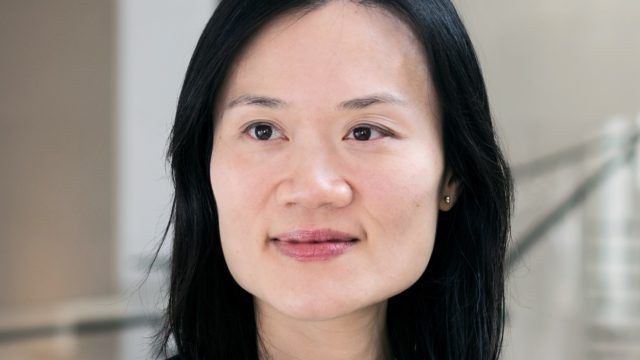The performance of key China equity indices makes the S&P 500 look a laggard and leaves the MSCI AC World index barely out of the starting blocks.
The benchmark MSCI China index is up 18.33% so far this year, and the MSCI A-share index of onshore stocks has surged even higher at 22.27%, FE Fundifo data shows. In contrast, the US bellwether has risen only 7.38% and the broad-based world index has crept a mere 3.7% higher.
“Yet, we continue to see a good opportunity in Chinese equities, despite the fact that they’ve already had a strong year; in aggregate companies are becoming better run and are returning more cash to shareholders,” said Joanna Kwok, manager of the $571m JP Morgan Asia Growth Fund, in a webinar this week.
“The growth of China’s middle class is creating a huge group of more prosperous and more discerning consumers. Growing affluence is resulting in “premiumisation”, or the shift to higher quality goods and services,” she said.
“This is a multi-year trend which could at times be slowed by cyclical factors but which will not be derailed by them.”
In particular, the Covid-19 pandemic has underscored the rising demand for better healthcare services, and Kwok believe that China will spend more on areas such as vaccination, enhanced diagnostic capabilities, and intensive care unit (ICU) capacity.
“Healthcare expenditure in China will continue to grow as a percentage of GDP, and the attractive demand dynamics are paralleled by impressive steps forward in innovation – for example, from [outsourced] contract research,” she said.
Tech tilt
Greater technological self-reliance and independence is another trend that encourages Kwok.
China is gaining technology market share from a global perspective, as a result of improved intellectual property, and with the tailwind that the government wants to become more self-sufficient in technology and other areas as geopolitical tension with the US ratchets higher, she argued.
“It has reinforced mainland Chinese authorities’ conviction that China needs to become more self-sufficient in both software (for example, cybersecurity) and hardware (for example, semiconductors),” she said.
The JP Morgan Asia Growth Fund has posted a three-cumulative return of 37.05%, outperforming both its benchmark (16.18%) and the average return of 114 Asia-Pacific equity products available to Hong Kong retail investors, according to FE Fundinfo.
The fund’s annualised volatility over three years is 20.36%, compared with 18.83% for its benchmark and 17.78% for the sector average. It has an information ration of 1.3, and has generated alpha of 7.4, FE Fundinfo data shows.
China stocks make up almost half of the portfolio, and about 65% is allocated to sectors that are typically designated “new economy”, such as information technology, communication services, consumer discretionary and healthcare, according to the fund’s August factsheet. Top holdings include Alibaba and Tencent, as well as Taiwan Semiconductor Manufacturing.
Kwok also sees potential in the development of an internal electric vehicle (EV) supply chain.
“Government and consumer preference for more environmentally friendly vehicles underwrite a long growth runway in the space. When seeking to exploit import substitution opportunities we look for companies with globally competitive products even in the absence of government support,” she said.
Stable growth
Kwok is sanguine too about the broader transformation underway in the structure of China’s economy.
“When you look at the composition of China’s GDP growth, it is now much higher quality with increasing contributions from sectors such as 5G, the internet economy and the digitalisation of businesses.”
As China’s economy gets wealthier and undergoes a natural structural deceleration, policymakers will focus more on the sustainability of economic growth.
“In other words, although the future GDP growth rate will on average be slower than in the past, it will also be less volatile,” she added.
Moreover, when stimulus is necessary, the primary emphasis is likely to be on fiscal rather than monetary levers, so Kwok doesn’t expect a repeat of “boom & bust’’ cycles of the equivalent magnitude to those seen in the past.
JP Morgan Asia Growth Fund: characteristics
| Country |
% weight |
Sector |
% weight |
| China |
49.8 |
Financials |
22.4 |
| Taiwan |
12.0 |
IT |
22.2 |
| Hong Kong |
11.0 |
Consumer discretionary |
22.1 |
| India |
9.4 |
Communication services |
15.1 |
| Korea |
8.9 |
Industrials |
5.6 |
| Indonesia |
3.8 |
Healthcare |
4.7 |
| Cash |
2.4 |
Consumer staples |
3.7 |
| Singapore |
1.8 |
Cash |
2.4 |
| Others |
0.8 |
Property |
1.7 |
Source: Fund factsheet, 31 August 2020
JP Morgan Asia Growth Fund vs MSCI AC Asia ex-Japan index and sector average


















